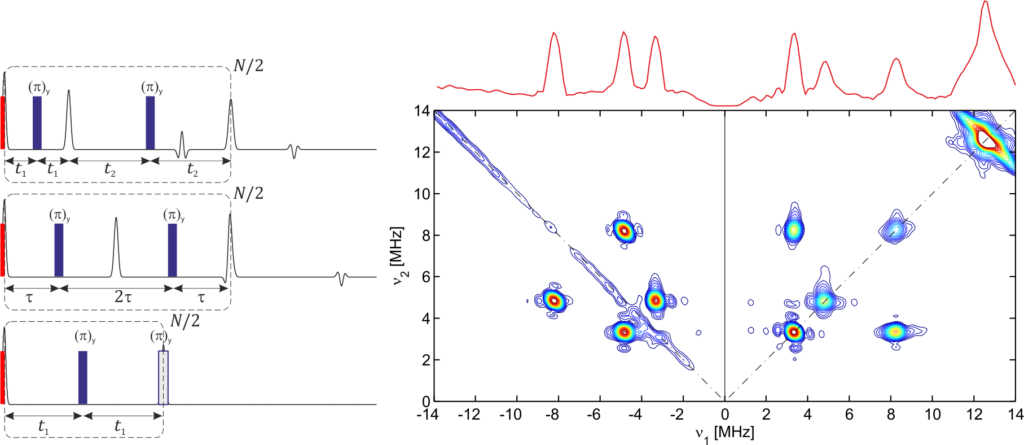ABOUT
Pulsed electron paramagnetic resonance (EPR) spectroscopy, where the microwave irradiation is applied in the form of short pulses, comprises many advanced methods for the measurement of dynamic effects and the determination of weak hyperfine interactions between the unpaired electron and distant magnetic nuclei. In our group these methods are typically applied for the measurement of the electron spin coherence time of molecular magnets or encaged paramagnetic atoms, and their evaluation as quantum bits (qubits) in the field of spin-based quantum computing. Moreover, they provide information on the local environment of the paramagnetic center and thus are well suited for structural studies in systems lacking long-range order on length scales that are not easily accessible by other techniques. These systems include paramagnetic species such as transition metal complexes, free radicals, irradiation-induced defects and molecular magnets.
The pulsed EPR group is part of the Institute of Nanoscience and Nanotechnology (INN) at the National Center for Scientific Research Demokritos. Our main project, entitled Advanced EPR Methods and Electron Spin Dynamics in Molecular and Nano-scale Materials, belongs to the “Chemical Sciences for Nanostructures and Biological Applications” program of INN.
The main objectives of the project include:
• Implementation of advanced EPR methods for quantum computation
• Development of pulsed EPR methods aimed at sensitivity enhancement
• Characterization of paramagnetic species including transition metal ions and free radicals

Main research activities:• Evaluation of spin-spin and spin-lattice relaxation times of atomic hydrogen for spin-based quantum computing applications
• Peculiarities of 2D hyperfine correlation spectra (HYSCORE) due to strain effects of paramagnetic centers
• Coordination chemistry of Cu(II) and V(IV) complexes: elucidation of electronic and geometric structure using advanced EPR methods